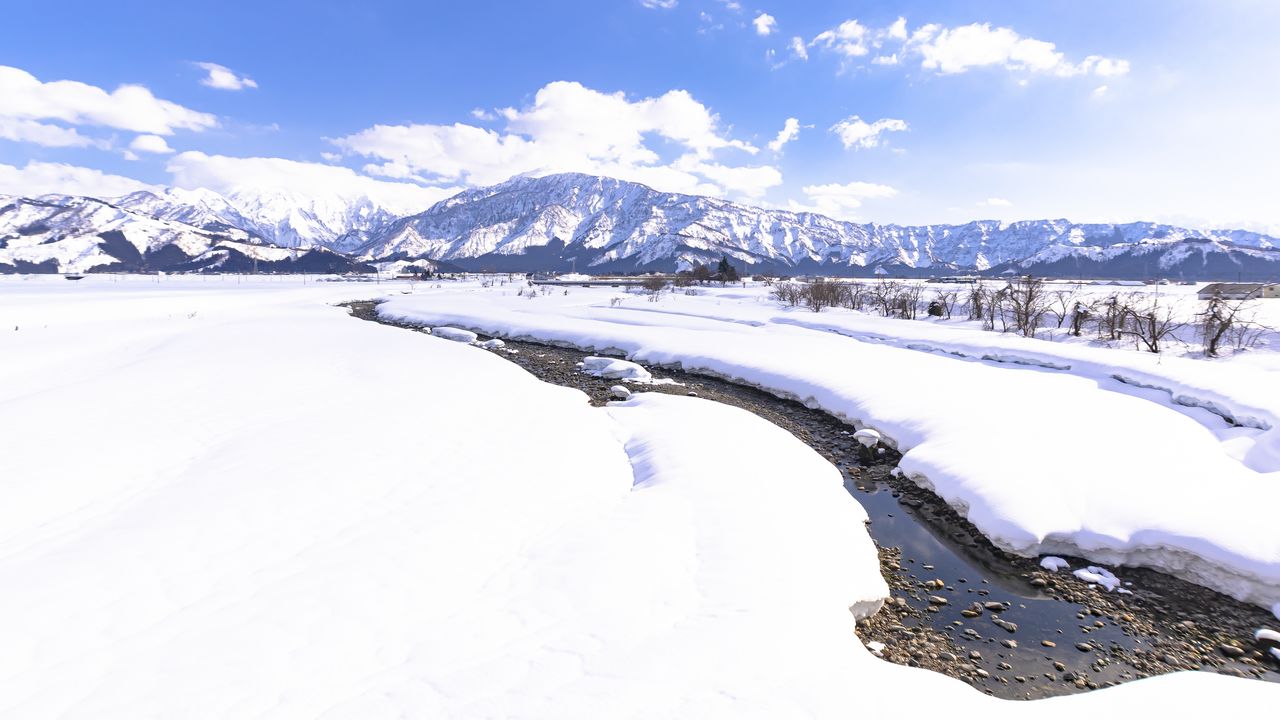
A Journey Through Japanese Haiku
The Snow and the River
Culture Environment Lifestyle- English
- 日本語
- 简体字
- 繁體字
- Français
- Español
- العربية
- Русский
ながながと川一筋や雪の原 凡兆
Naganaga to / kawa hitosuji ya / yuki no hara
The river’s long
line stretching through
fields of snow(Poem by Bonchō, perhaps written in 1690.)
When snow falls somewhere it is uncommon, the scenery transforms. Much of Japan’s classic literature was written around Kyoto, where heavy snowfalls are rare, and poets often expressed their longing for it to come and bring fresh sensations to their daily lives. The author of this haiku was Nozawa Bonchō (1640–1714), who lived in Kyoto and was a disciple of Matsuo Bashō.
The haiku describes a very simple scene. A long black line stretches across a pure white background—this is a river running through a snowy plain. Uncultivated and cultivated fields have become a new world of white, and the previously unobtrusive river now catches the eye. Perhaps this is the outskirts of Kyoto.
Four years before the poem was written, another of Bashō’s disciples called Otokuni wrote something very similar: Kawasuji no / tadashiku narishi / yukino kana (The river’s line / shows clearly against / the snowy fields). The difference may come in a slight sense of insistence in Otokuni’s “shows clearly.” While the Otokuni poem seems to limit how we should observe the scene, Bonchō’s efforts to straightforwardly depict what he sees successfully evoke for readers the particular feelings of a snowy day.
(Originally published in Japanese. Banner photo © Pixta.)